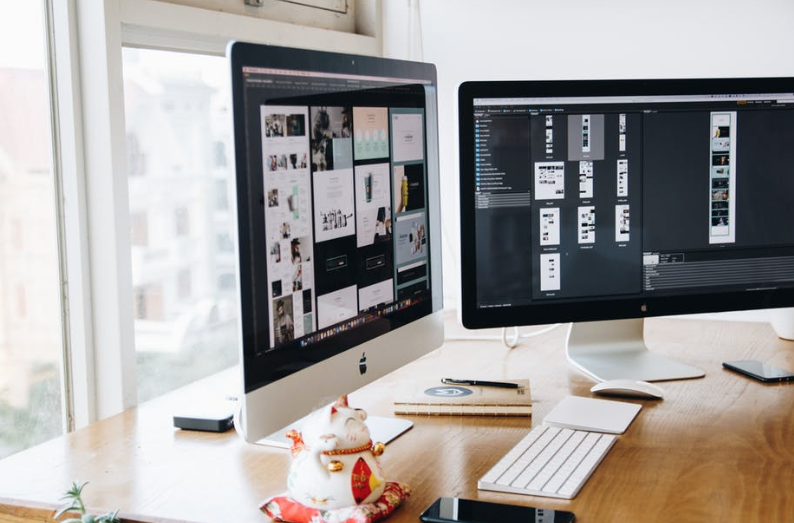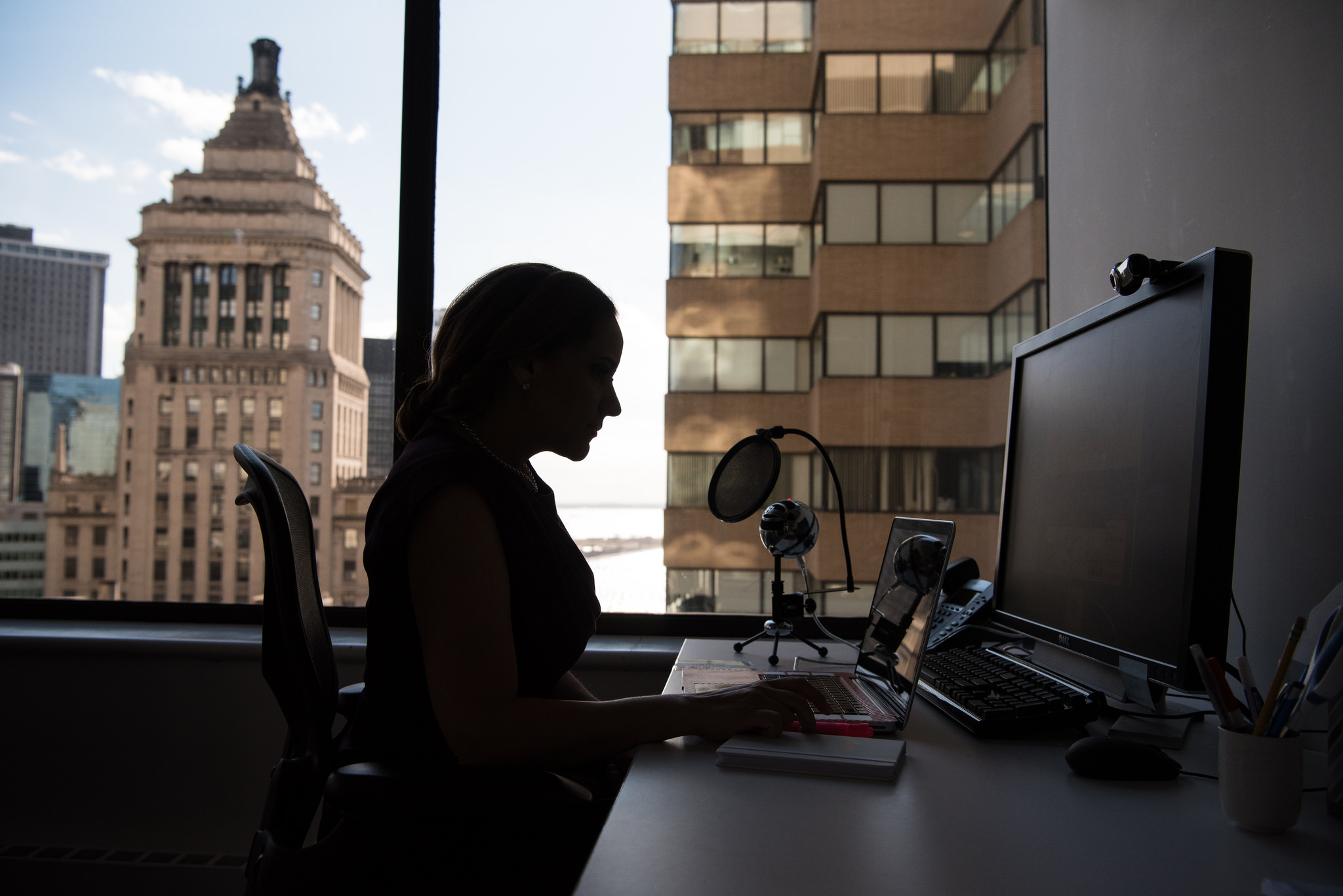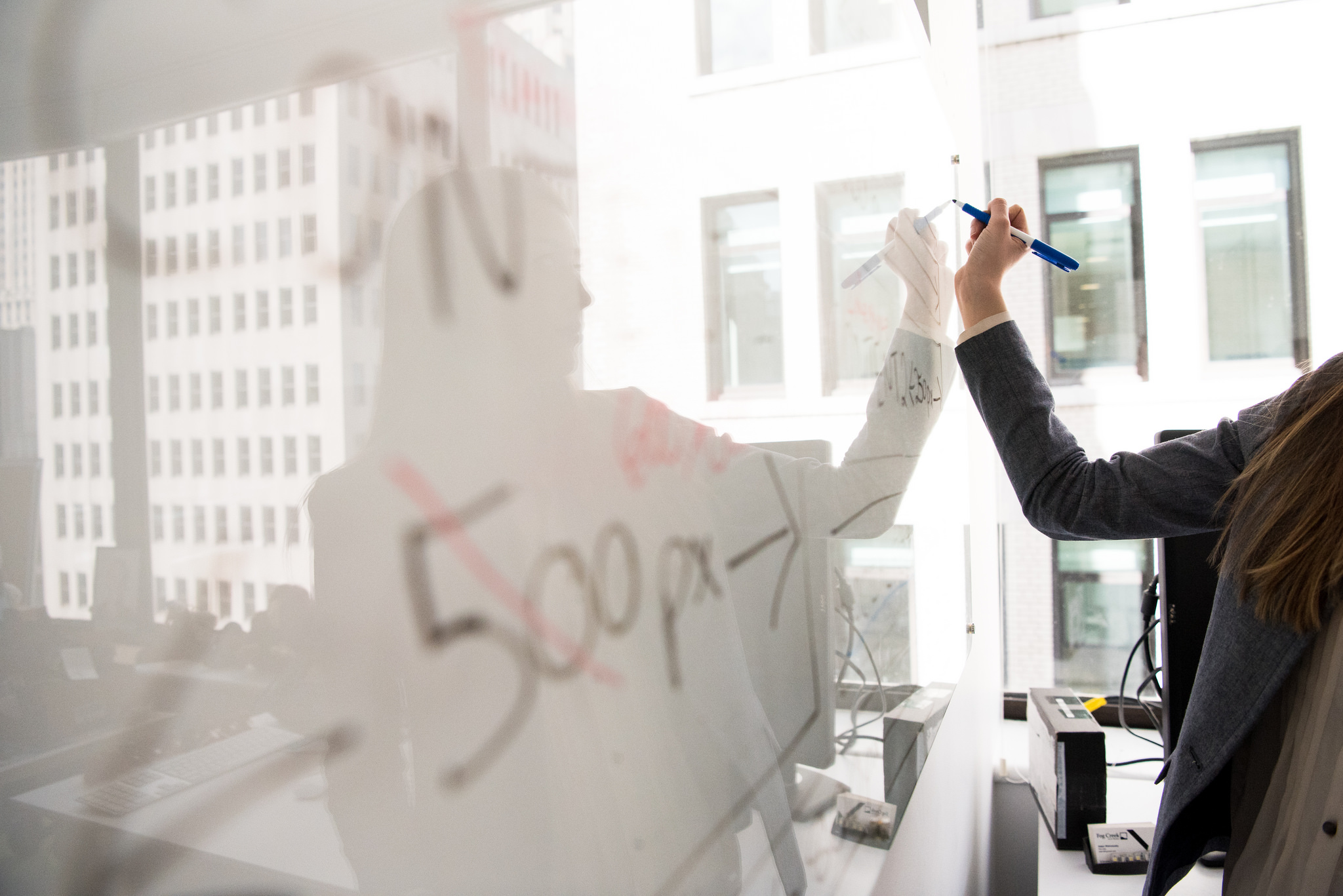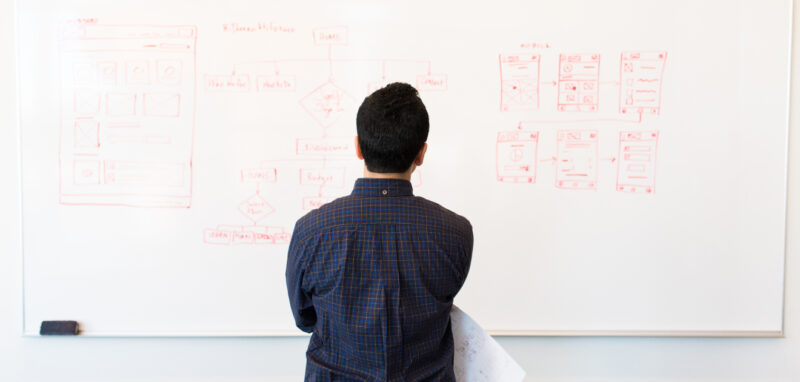
An Interview with a Brand Designer: 8 Questions Answered
This piece is a part of ‘The Career Strategist’ blog series
This is the final installment of a three-part interview series with some of the designers we have at Hired. We’ve previously discussed user experience design with Kelly Gagnon, a UX Design Lead, and product design with Alex Couch, a Senior Product Designer. Finally, we’ll learn from Cindy Tsui, a Senior Brand Designer, about her experience in the world of design, her work as a brand designer, and her time at Hired.
Brittany: Can you tell us a bit about yourself?
Cindy: I was born and raised in the Bay Area. I grew up in San Jose and graduated from San Jose State University’s BFA Graphic Design Program in 2012. I started working in San Francisco when I finished school and worked for agencies – Sequence and AKQA – as a visual designer for clients like Apple, Nike, Old Navy, Levi’s, and Chevron. I dabbled in various types of design, such as branding, product, environmental, and digital marketing, before I decided to make the move in-house and join Hired’s small design team in 2017. Now, I lead the creative efforts for marketing communications and branding as a Senior Brand Designer.
Brittany: How did you get into design?
Cindy: While there was no one big aha moment, there were small instances that were telling signs that I had a knack for design. When I was in elementary school, I had a friend who would download different typefaces onto CDs and share them with me. I subsequently became obsessed with setting my essay titles in various fonts like Jokerman, Papyrus, and Allstar. By the time I was in eighth grade, my brother taught me how to inspect the basics of code and got me a bootleg version of Photoshop – I think I made about 15 Geocities sites for my friends that summer. In high school, I got into designing t-shirts for all of these sports teams and clubs that I wasn’t even a part of, and while I had never intended to join the school’s yearbook class (the journalism class I wanted to be in was cut and was being taught by the same teacher), I became the yearbook editor because I naturally had a LOT of opinions of page layouts, copy, and photography. I never knew all of those individual interests equated into this thing called design. But in retrospect, it was almost a calling.
Brittany: What kind of work are you responsible for at Hired?
Cindy: I was Hired’s first senior visual designer brought on to focus on brand design. With such a small design team in a startup company, this means that I lead all creative efforts for marketing communications – ads, emails, campaigns – in addition to owning all brand definition and development for the company, including the look and feel, messaging, and general corporate identity. The main objective of my position is to ensure that there is a consistent, meaningful, and memorable expression of who we are through our touchpoints.
Brittany: Can you describe your day-to-day as a brand designer?
Cindy: My days consist of collaborating with marketing stakeholders to ensure their projects have the design support they need. This might entail spending time designing assets, sitting down with marketing managers to strategize effective campaign tactics, or working with third-party vendors to produce branded collateral for events. I collaborate closely with product designers to define and develop the UI for our design system and give feedback on product designs where I can. I also work cross-functionally across sales, people, and operations teams to brainstorm and execute on design ideas where brand can be leveraged. I lead a team of two (myself and a junior designer) on the marketing side, so I also balance time to manage projects, art direct, and provide career mentorship for my teammate.
Brittany: How do you approach brand design at Hired? In your experience, does it range greatly from company-to-company?
Cindy: One piece at a time. And with a lot of patience and expectation of change. When I started at Hired, there was the bare minimum of what could be considered a “brand” – some colors, a typeface, a general photo style, and a logo – and my first assignment was to create Hired’s first brand guidelines. Unfortunately, when establishing a brand from the ground up, the pieces you start with are not visual, so there was some backtracking that needed to be done. I had to ask the fundamental questions of the company: What are its values?, Who is the core audience?, and What are the brand traits? These were foundational to building a brand because they ultimately defined who the company is and what it promises to deliver to its audience, regardless of how the business evolves over time.
Once the core meaning and story of the brand is figured out, more questions can be posed: How do we best express who we are through imagery, typography, or color? What does our voice sound like in our messaging? A common analogy is that if a brand were a person, the values and traits are its personality and the visual elements are an outward expression of that. And when all these elements come together, brand begins to permeate into other parts of the company and more tactical questions across teams can be answered like: Will this product feature be meaningful to our core audience? Does this ad creative accurately represent who we are and what we have to offer? Are we demonstrating our brand traits in how we promote office culture or even collaborate with each other?
When it comes to branding, this approach is pretty standard. But depending on the company, how it’s achieved varies. Sometimes it’s about defining the basics of who they are. Sometimes they know exactly who they are, but just need to find the right market fit. Sometimes they are shedding an outdated look with a fresh one. And sometimes they have a trusted brand that simply needs modern applications. At any point, different parts of a brand can be constructed and reconstructed – but in the end, a brand will always be comprised of the same core elements.
Brittany: In your opinion, can you describe the work of a great brand designer? What contributions do they make to the overall product?
Cindy: The best brand work is one that is thoughtful, flexible, and emotional. It is a story that differentiates a company from competitors with similar products and services. It is a tool that can be used across various teams to ensure consistency. It is an experience that connects users to a common purpose. A strong brand brings value to a product by providing a North Star for a clear and consistent experience. This builds familiarity, trust, and loyalty with those who interact with the brand. When done right, no matter where a person encounters the brand – through the website, at a conference booth, during a troubleshooting call, or even an interview at the corporate office – the most memorable brands know who they are and deliver on it confidently.
Brittany: Where do you find inspiration for your work in brand design?
Cindy: Because brand is sort of a catch-all, I find my inspiration in all parts of my life. When I stay in Airbnbs, I think about how much booking one can save me versus a hotel, how the host communicates leading up to a trip, and how the ambiance of the residence elevates the spirit of the city I’m visiting. I consider doing my taxes with TurboTax such a seamless and, dare I say, enjoyable process that it’s top of mind for dry life requirements made delightful and easy. Even a visit to Target to purchase toothpaste is a place of inspiration for me. From being informed of seasonal promotions by their quirky and colorful store displays, to finding deals on their mobile coupon app, to breezing through their intuitive self-checkout aisles, every touchpoint is a reminder that shopping there is fun and rewarding. Ultimately, I find inspiration in brands that make ordinary necessities in life enjoyable experiences.
Brittany: What areas of brand design are often overlooked?
Cindy: Authenticity. Simply put, a company can say they are trustworthy, human, innovative, or other various buzzwords on paper, but if the story isn’t authentic to their DNA – if the brand isn’t enforced day in and day out within the company – the brand will fail when hard times hit or when difficult decisions need to be made.
Related blog posts

Is My Job Too Much Work for One Person?
4 Strategies to Address Feeling Overwhelmed at Work Whether you work for a startup or...

Are You Burnt Out (Or Do You Really Just Hate Your Job)?
The difference between the two and what to do about it Your career may be a large part of your...

4 Things Every Engineer Must Do Before A Technical Interview
In order to become an expert on something, mere talent or aptitude is not enough. According to...

Where Do Engineer Salaries Pay the Best (Highest) Standard of Living?
Opportunity shifts from higher cost-of-living markets The rise in remote work prompted...

What Makes You Love Your Job? 6 Crucial Job Happiness Indicators
In a world with increasingly long workweeks and demanding workplace expectations, there’s a...

Salary Negotiation 101: How to Know and Ask For Your Salary Worth
Salary negotiation is a difficult task for everyone. That goes for whether you’re just...

